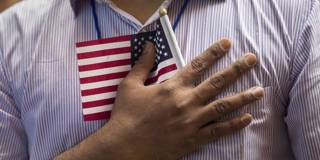With America heading for one of the most fraught and potentially disastrous presidential elections in its history, it is difficult to see how such a deeply polarized country could ever be made whole again. In fact, today's divide is between two broad social types that both are essential to group maintenance and survival.
WASHINGTON, DC – The words nationalism and patriotism are commonly bandied about to describe people’s entrenched political commitments, and both labels have made frequent appearances in the run-up to next month’s US elections. For a psychologist, however, these terms represent distinct but variable expressions of how humans identify with their society. In fact, the personality differences between nationalists and patriots seem to be universal across cultures, suggesting they are part of our common heritage as humans.

WASHINGTON, DC – The words nationalism and patriotism are commonly bandied about to describe people’s entrenched political commitments, and both labels have made frequent appearances in the run-up to next month’s US elections. For a psychologist, however, these terms represent distinct but variable expressions of how humans identify with their society. In fact, the personality differences between nationalists and patriots seem to be universal across cultures, suggesting they are part of our common heritage as humans.